 INTRODUCTION
INTRODUCTION
Projectile motion occurs when an object or particle is dropped or is fired at some initial velocity, where it moves along a curved path under the influence of gravity (Splung,2015). It is known that without air resistance the maximum range is achieved at a launch angle of 45° and is illustrated below in figure 1, the report will determine whether or not this remains true in real life.
.
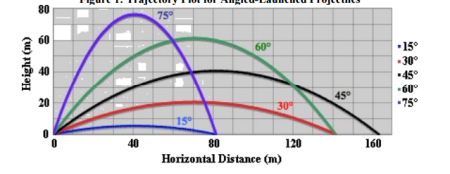
This report will include a design and construction of a projectile launcher and will investigate the relationship between the range and angle of a projectile. The launcher will use mechanical means to launch the projectile, it will also be able to reset so that the firing technique is identical every time and will be safe for the operator.
AIM: To design and construct a projectile launcher that will be used to investigate the relationship between the range of a projectile and its launch angle.
HYPOTHESIS: That the projectile will achieve a maximum range with a launch angle of 40° including the horizontal force of air resistance.
INDEPENDENT VARIABLES: The independent variables is the angle of release, measured in degrees.
DEPENDENT VARIABLES: The dependent variable is the range at which the projectile will land.
CONTROLLED VARIBALES: The controlled variables are the handball projectile and the height of release.
APPARTUS AND MATERIALS:
- Projectile launcher
- Handball projectile
- Sand pit
- Tape measure
- Protractor
 Design and construction of the projectile Launcher
Design and construction of the projectile Launcher
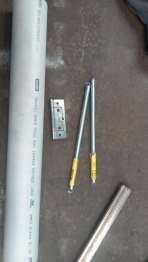
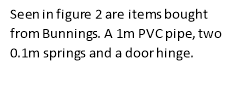


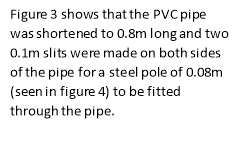
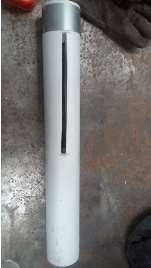
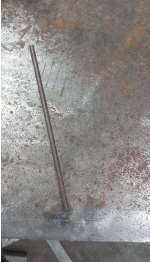
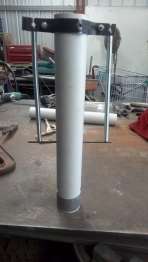

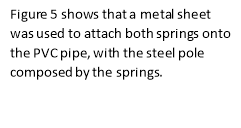
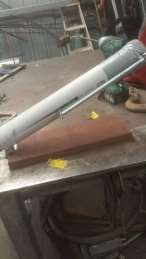


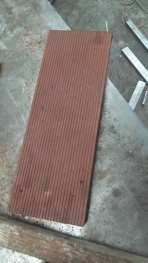
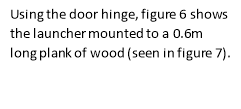
PROCEDURE
- Have projectile launcher on a table one metre above the ground and angle the projectile at 0° with a protractor.
- Load the handball projectile into the launcher and set the projectile in position so that it can be fired by the triggering release.
- Have the sandpit set up at the distance the projectile will land.
- Fire the projectile such that it lands in the sandpit and measure with tape measure and record results
- Repeat steps 1-4, 5 times with the constant height but varying the starting angle each time
SAFETY HAZARDS
|
Hazards |
Precautions/Actions |
|
Risk of projectile hitting someone |
As the projectile is continuously being fired from the launcher it is important for this experiment to be carried out away from other groups. Group members will need to stand away and watch from a safe distance. Also for the operator, in order to shoot the projectile without being injured they should use the projectile as intended and pull the trigger down carefully before letting go. |
|
Personal attire should be appropriate for laboratory work |
Any hanging or loose jewellery should be removed before conducting experiment to minimise chances of getting caught by any parts of the launcher as it can be easy to be caught by the steel pole if operator is not careful. Teacher is to be notified if it gets caught and to safely remove and look for any injuries because of the jewellery. |
|
Equipment should be firmly together |
So that the equipment does not breakdown mid trial and potentially injure someone, the equipment should be put firmly in place with everything intact before conducting any trial. |
RESULTS
Table 1: Table of results
|
Starting angle ( |
Landing range of projectile trial 1 (m) |
Landing range of projectile trial 2 (m) |
Average range (m) |
|
0 |
2.26 |
2.30 |
2.28 |
|
20 |
2.46 |
2.40 |
2.43 |
|
40 |
3.06 |
3.01 |
3.04 |
|
45 |
2.45 |
2.94 |
2.70 |
|
50 |
2.75 |
2.74 |
2.75 |
Figure 3: Relationship between starting angle and average landing range
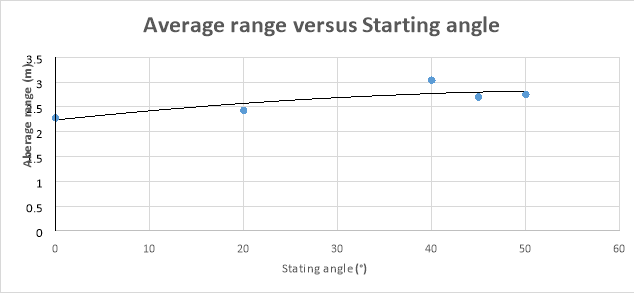
Using the slope formula
It is clear from table 1 that for this particular experiment the best angle to achieve maximum
It is clear in figure 3 that as had increased the resistance had also increased, this means that there is an directly proportional relationship between resistance and
had increased the resistance had also increased, this means that there is an directly proportional relationship between resistance and , indicating that the thicker the wire means less resistance as d2 will be inversely proportional to resistance, which is due to less collisions with thicker wires.
, indicating that the thicker the wire means less resistance as d2 will be inversely proportional to resistance, which is due to less collisions with thicker wires.
Results shown in figure 3 shows little scatter around the trend line. This indicates a high level of precision in the results, indicating that there were minimal random errors.
Possible sources of random error that may have reduce the precision of the result is slight misreading values in the protractor and this could have happened due to parallax error. The correct lining of sight needs to be used to avoid parallax error, the exact point is only measured if the mark of the protractor is exactly parallel to the eyes and is difficult to achieve with the human eye, and ultimately cannot be avoided. But According to the graph in figure 3, it is seen that there are no outliers from the trend line, which suggests that this did not happen. If this fault was from parallax error, a way to minimise this error is to have an instrument designed to eliminate this effect by placing a mirrored surface behind the launch angle so the operator can align eyesight with the scale with ease.
Another random error is possibly setting up the equipment incorrectly, as having
Possible sources of systematic error that may have reduced the accuracy of the results may possibly have been a problem with the projectile launcher, not having consistency in the velocity at each launch which will affect the range of the projectile, to minimise this error is to have some sort of velocity measurer to keep consistency in the projectile launcher.
the process of levelling eye level and where the values are located in the protractor.
CONCLUSION
The aim of this experiment was to design and construct a projectile launcher that will be used to investigate the relationship between the range of a projectile and its launch angle. This was attained by varying the angle of the constructed launcher and firing it at the same height with the same tension every time. It was clear from this experiment that there is a relationship between the angle of release of an object and the landing range and that they had a parabolic relationship. The hypothesis that the projectile will achieve a maximum range with a launch angle of 40° including the horizontal force of air resistance, was supported as it is seen in table 1 that the maximum range is achieved when launched at an angle of 40 .
.
Sources used:
William Shakespeare was born in this house and grew up here with his parents and siblings. He also spent the first five years of his marriage living here with his wife Anne Hathaway. John and Mary Shakespeare were wealthy enough to own the largest house on Henley Street.
John Shakespeare lived and worked in this house for fifty years. When he married Mary Arden she came to live with him and they had a total of eight children, William was the third to be born. In 1568 John became the Mayor of Stratford, which was the highest elective office in the town. On Sunday, dressed in his fine red robes, he would have been escorted to Holy Trinity church to attend mass. It was because of his father’s status as Mayor that William was privileged enough to have attended the local grammar school to begin his education.
Find Out How UKEssays.com Can Help You!
Our academic experts are ready and waiting to assist with any writing project you may have. From simple essay plans, through to full dissertations, you can guarantee we have a service perfectly matched to your needs.
View our academic writing services
John Shakespeare died in 1601 and as the eldest surviving child, William inherited the house. He leased part of the property and it became an inn called the Maidenhead (and later the Swan and Maidenhead). The inn remained until 1847. When Shakespeare died he left the house to his eldest daughter Susanna, and when she died she left it to her only child, Elizabeth.
Although she married twice Elizabeth had no children, so when she died the house fell to a descendant of Joan Hart, one of Shakespeare’s sisters. The house was owned by the Hart family until the late 18th century, until it went up for sale and was purchased by the Shakespeare Birthplace Trust in 1847. We have cared for it ever since.
For the official guidebook of the Shakespeare Birthplace Trust visit our online shop.
Cite This Work
To export a reference to this article please select a referencing style below:


